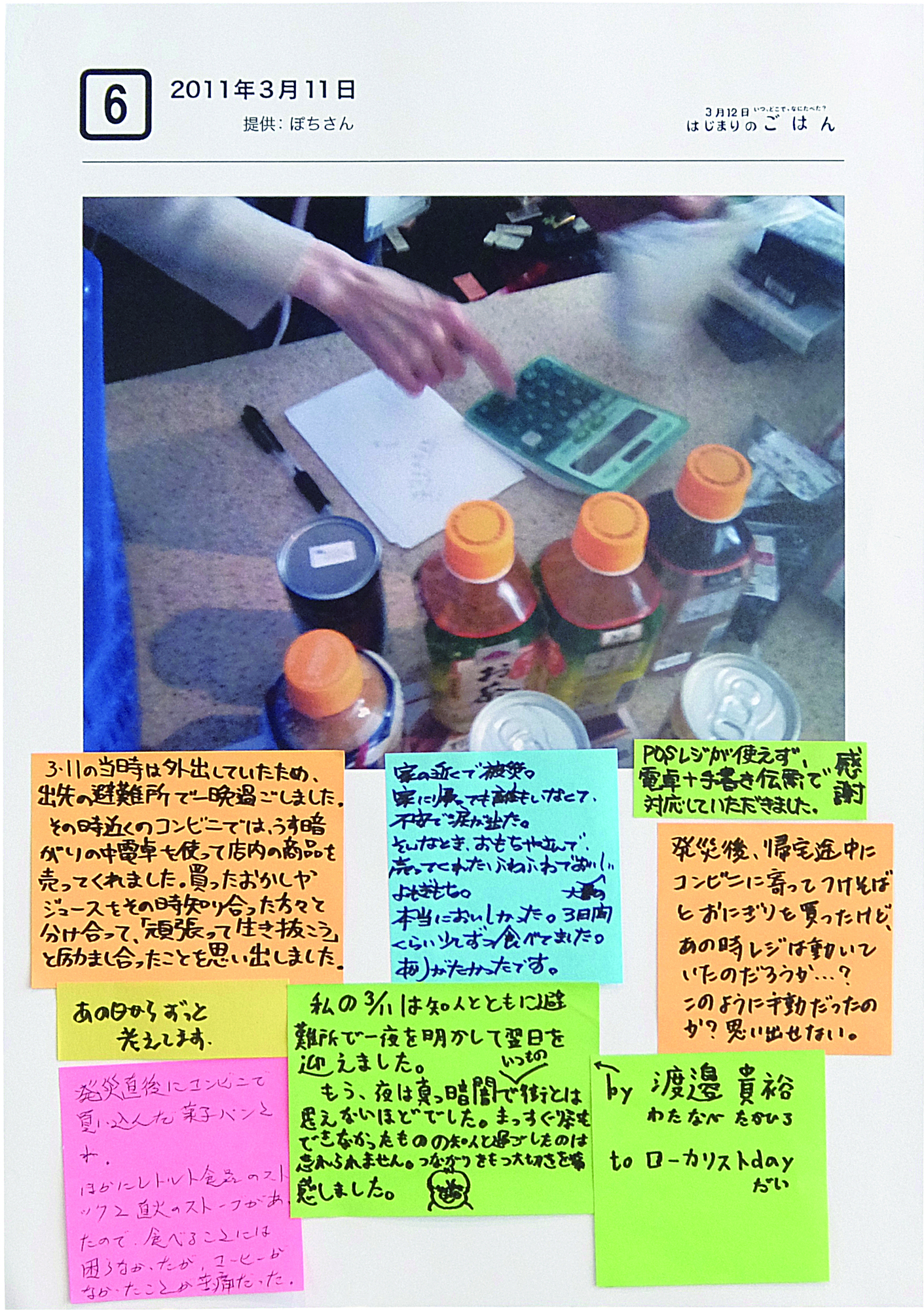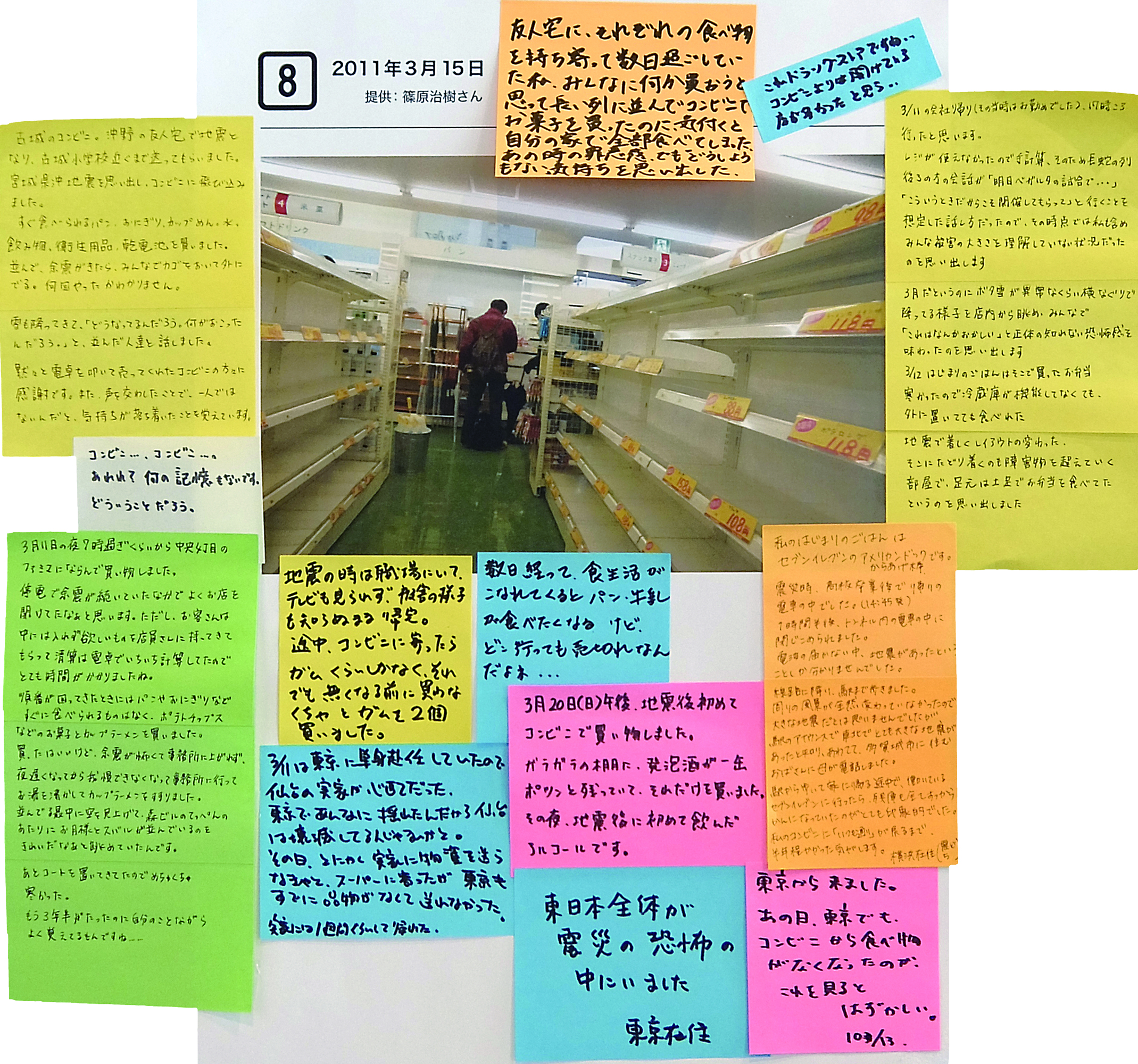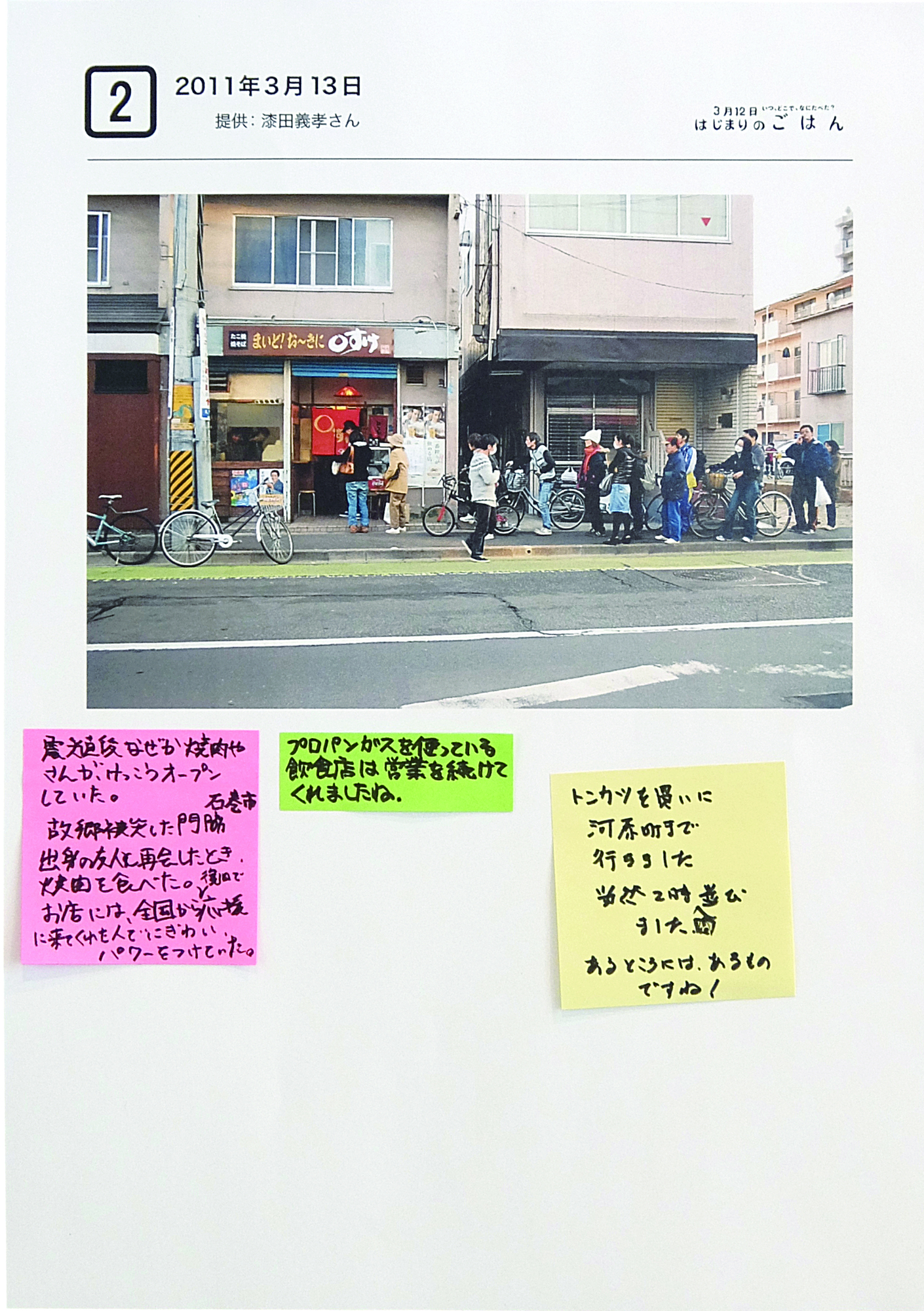March 12: The First Meal After the Earthquake/Convenience stores and supermarkets 07 ”At the time, I was in grade five and couldn’t do anything. I felt angry at myself for being so powerless, and I felt frustrated.”
3.11 Archive of Memories & Recorder311 Collaborative Project
This article introduces the sticky notes visitors contributed and shows what the panels looked like during the exhibition period of “March 12: The First Meal After the Earthquake ––– When, Where, and What Did You Eat?” For the summary of each exhibited panel, please check out the [INDEX] page.
▼About “March 12: The First Meal After the Earthquake”
▼About sticky note comments
[Fall 2014] Exhibited Panels
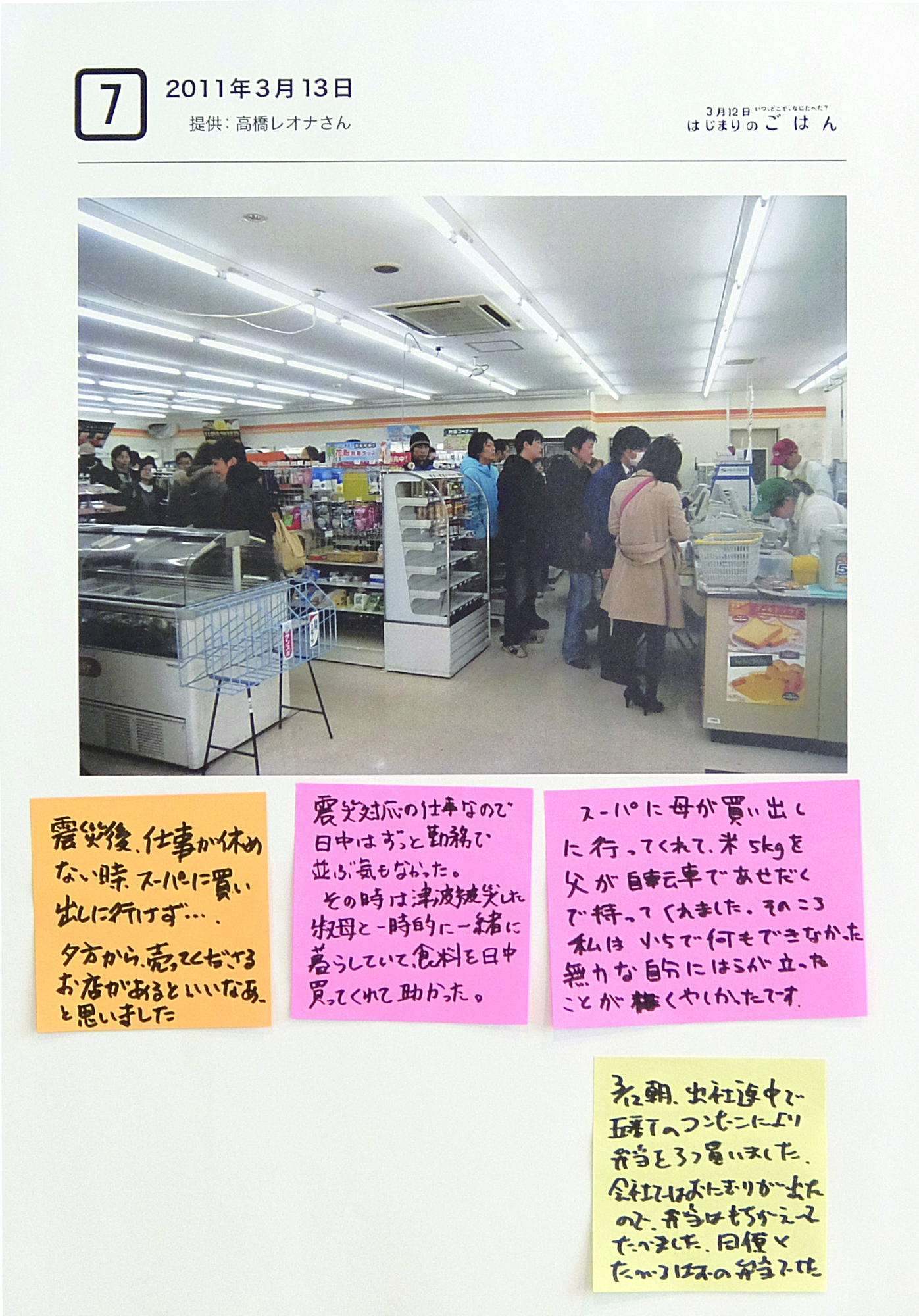
Exhibition Period: October 1st to November 16th, 2014
Venue: Sendai Mediatheque
[Spring 2015] Exhibited Panels

Exhibition Period: February 20th to March 18th, 2015
Venue: Sendai Mediatheque
*On the panels with sticky notes from the [Fall 2014] exhibition, visitors added their own comments.
*Sticky notes written in English are translations of the Japanese text indicated by the arrow.
Comments by Visitors about the Panels
Some comments are not directly related to the photo content or location.
▷After the disaster, I could not take time off from work so I couldn’t go shopping at the supermarket… I wished there was a store that would start selling from the evening.
▷I was doing earthquake-related work and was busy all day long, so I didn’t feel like lining up for food. At the time, I was living with an aunt who was a victim of the tsunami. She went out to buy food during the day, which helped me out a lot.
▷My mother went out to buy things at the supermarket, while my father came home in a big sweat, carrying a five-kilo bag of rice. I was in 5th grade elementary school at the time and I was so frustrated and angry with myself for not being able to do anything, for being so useless.
▷On the way to work on the morning of March 12, I bought three bento boxes from a convenience store in Goban-cho. But they gave us rice balls at work, so I took the bento boxes home and ate them there. I had expected to eat them with my colleagues.
▷Right now, we can routinely have meals every day at ease and fill our stomachs. I felt ashamed of myself for taking these days for granted. I know the inconvenient life caused by the disaster, so I will go on living, not taking the ordinary routines for granted.
About sticky note comments
People from many different backgrounds visited this exhibition, including people from Sendai City, as well as people from everywhere, including coastal areas, inland areas, inside and outside of Miyagi Prefecture, and inside and outside of Japan. There were also both adults and children, and these people left comments on sticky notes about what they remembered from seeing exhibited photos at the time of the disaster. Here, the original text comments that were left are posted without editing. Also, English text in gray are translations of Japanese texts.
Original Photo
“People Making Lines Inside a Convenience Store where Most of the Shelves are Empty”” *
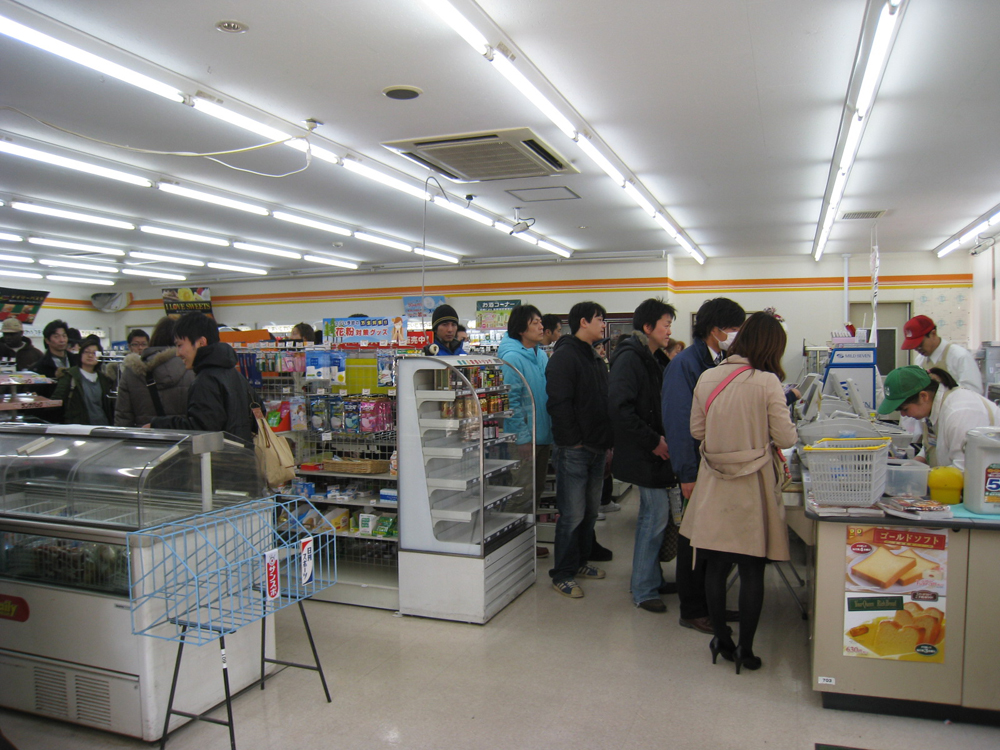
March 13th, 2011
Miyagino Ward, Sendai City, Miyagi Prefecture
Recorded by: TAKAHASHI Reona
*Source:
Photo Collection “3.11 Record of Memory—3.11 Disaster that Citizens Took as Record of Memory—”
Issued and provided by: 20th Century Archive Sendai
About “March 12: The First Meal After the Earthquake ––– When, Where, and What Did You Eat?”
The project is a participation style exhibition that exhibits photos of “meals” at the time of the disaster, such as photos related to emergency food distribution, grocery shopping, and people sharing meals at a table. Visitors were free to write sticky notes about what they remembered after seeing the photos and how they lived at the time. This exhibition was planned collaboratively by 3.11 Archive of Memories (at the time, called 20th Century Archive Sendai) and the center for remembering 3.11 (recorder311).
Please check out the [INDEX] page for the summary of each exhibited panel and utilization/application examples.
| Recorded on | 13 March, 2011 | |
|---|---|---|
| Recorded by | TAKAHASHI Reona | |
| Recorded at | Miyagino Ward, Sendai City, Miyagi Prefecture | |
| Series |








